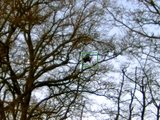Aussie GPS technology used on US cube satellite
Australian GPS technology, developed by the University of New South Wales in partnership with the Defence Science and Technology Group, has been included in the payload of the Biarri-Point cube satellite developed by the US, the Australian Department of Defence (DoD) announced on 18 July.
The Australian-developed Namaru GPS technology is a miniaturised GPS payload designed for use on a cube-satellite.
The Biarri-Point satellite, launched in April 2017 to the International Space Station, was recently deployed from the space station’s Nano Racks into its own orbit.
Now on-orbit and successfully functioning, the Namuru GPS technology is conducting a range of experiments aimed at increasing understanding of outer atmospheric effects on small satellites and improving situational awareness of space.
Minister for Defence Industry, Christopher Pyne, said: 'The 2016 Defence White Paper highlights the importance of space-based systems for information gathering, communications, navigation and surveillance for all Australian Defence Force and coalition operations.
'Advances in small low cost space platforms provide a unique opportunity to support Australian Defence Force capabilities and to rejuvenate Australian space research.'
More from Digital Battlespace
-
![EID to unveil new vehicle communication system at DSEI]()
EID to unveil new vehicle communication system at DSEI
The Portuguese company’s naval communications system is in service across more than a dozen countries. It has turned to its home nation for support in developing a new vehicle based C2 system.
-
![Chess Dynamics successfully demonstrates Vision4ce AI-driven tracker]()
Chess Dynamics successfully demonstrates Vision4ce AI-driven tracker
The Vision4ce Deep Embedded Feature Tracking (DEFT) technology software is designed to process video and images by blending traditional computer vision with artificial intelligence (AI) algorithms to present actionable information from complex environments.
-
![Wave Relay devices cleared for security use on commercial systems in industry trend]()
Wave Relay devices cleared for security use on commercial systems in industry trend
Persistent Systems has been cleared by National Security Agency (NSA) to transmit sensitive data on commercial networks. The devices are added to the NSA’s Commercial Solutions for Classified (CSfC) component list which also includes other companies’ products providing the same security.
-
![UK teases cyber spending boost in Strategic Defence Review ahead of “imminent” release]()
UK teases cyber spending boost in Strategic Defence Review ahead of “imminent” release
The release of the UK’s Strategic Defence Review (SDR) has been long promised as mid-year. It is possible it could be as early as 2 June although the UK Ministry of Defence (MoD) continues to play its cards close to its chest.
-
![Intelsat emphasises SATCOM resilience for SOF in contested domains (video)]()
Intelsat emphasises SATCOM resilience for SOF in contested domains (video)
Intelsat outlines how its multi-orbit SATCOM architecture is enhancing connectivity and resilience for special operations forces operating in degraded and contested environments.






















